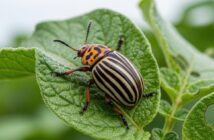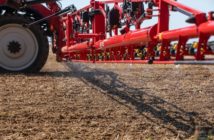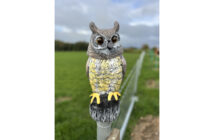Further possible cases of Italian ryegrass resistant to the herbicide glyphosate are no real surprise for NIAB’s Dr Mark Fletcher. He is a little concerned by the latest developments but he says there is no guarantee resistance will spread further, especially if best practice is applied.
“I’m not surprised by the possibility of further cases. There are natural populations in the environment where the genetics have some degree of tolerance to various modes of action. With the realities of real-world farming, there are bound to be situations where glyphosate applications have been compromised, whether that be dose, application or environmental factors, so resistance is being pushed that way.”
He also highlights changing farming practices compounding the issue, such as the widespread adoption of min-till and the reduction in traditional weed control methods such as ploughing.
Further cases don’t mean the need to change systems of grassweed management strategies but it is a reminder of the need for vigilance and best practice. “There is clear advice when it comes to hygiene and the application of glyphosate, these must be followed to the full.”
He stresses it doesn’t make the withdrawal of glyphosate more likely. However, he can foresee further use restrictions in the future.
ADAS researcher John Cussans is also a little concerned. He stresses that cases are isolated and refer only to wild Italian ryegrass (Lolium multiflorum) and that the suspected cases were found in high-risk farming systems. However, he does admit his confidence has “been shaken a little”.
“We need to do more work to understand exactly what the situation is in the field, that’s why we’ve flagged these three farms as high risk for the time being. The issue is confined to Italian ryegrass but when we talk about the risk of resistance, it is relevant to all farmers.”
John doesn’t expect we are seeing a very rapid rate of development, the situation linked to high-risk situations where no-till or minimum disturbance has allowed ryegrass plants to become large, well tillered and rooted prior to attempts to control pre-drilling.
For growers with Italian ryegrass , John says they need to be more “tuned” to the potential posed by glyphosate resistance and react to any observations in the field, and always have cultivation/mechanical weeding as an option.
The current Weed Resistance Action Group (WRAG) stewardship guidance remains in place, although John expects it might need a “tweak” given the exact situation. He says growers should adhere to the four pillars of:
Monitor Success
Prevent Survivors
Use Alternatives
Maximise efficacy
For full information on WRAG resistance guidance, visit: https://ahdb.org.uk/knowledge-library/how-to-minimise-glyphosate-resistance-risks-in-grass-weeds




